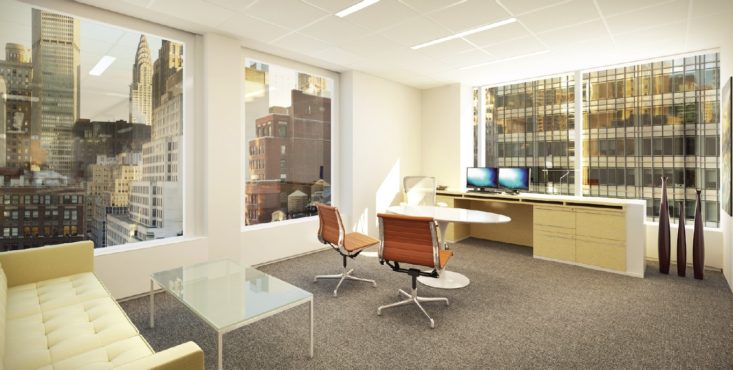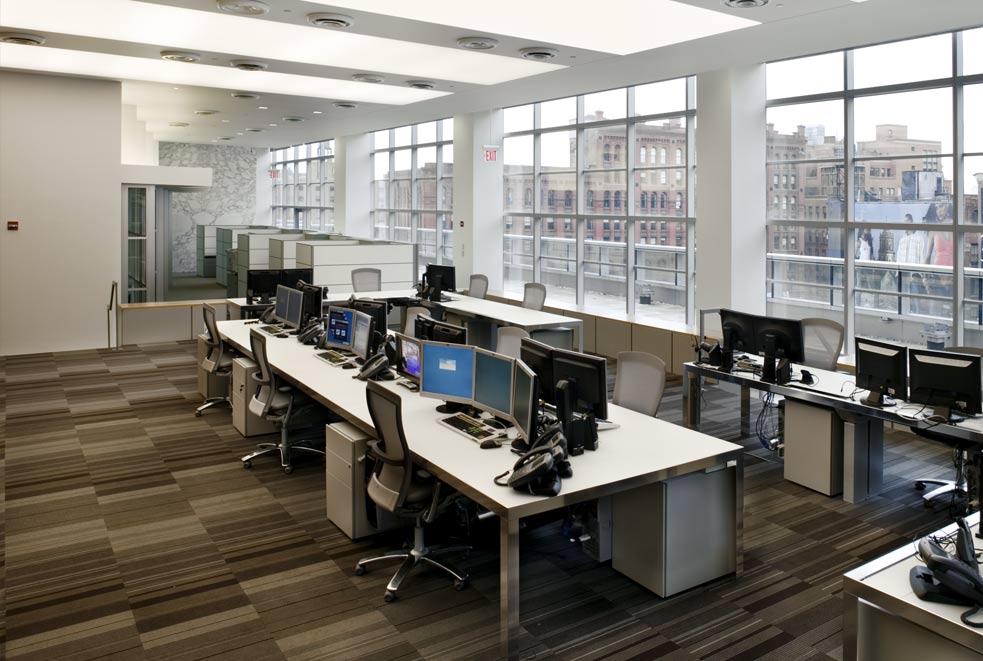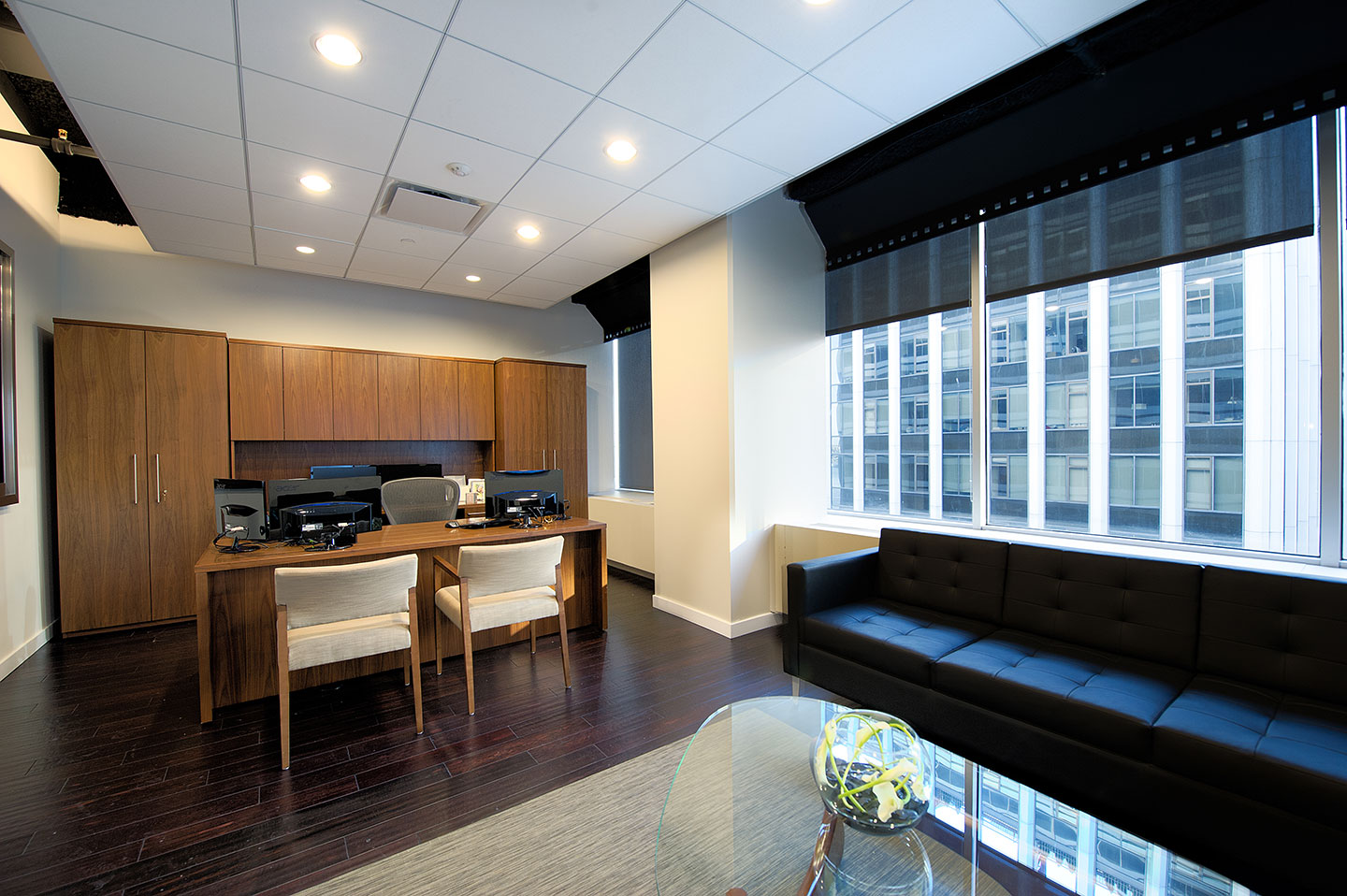The first step to any office move is taking time to understand your budget, needs, and deal-breakers. This up front exercise will go a long way towards focusing your search and quickly finding the perfect office space. At SquareFoot, we’ve helped numerous hedge funds find the right space for their professional needs. Here are a few tips from our brokers on how to hit the ground running with your hedge fund office space search.
Step 1: Determine your moving timeline and desired lease length
Two primary determinants of your rent on a per-square-foot basis is how long you’re willing to commit to a lease and how quickly you need to move in. In New York City, the standard lease term is 3-5 years, and companies need to plan 3-9 months ahead of their desired move-in date. There are always properties available for immediate move-in or on short-term or flexible leases, but the options are limited and likely more expensive.
In some cases you may get a landlord willing to push a 3-year term down to 2 years, but 3 years is usually the shortest lease most landlords are comfortable with. If you need a lease term shorter than 2 years, you should consider the sublease market.

Step 2: Understand your space and lease options
There are three main types of commercial real estate leases: gross, net, and absolute. The lease you sign will determine how much you’ll pay for building operating expenses, maintenance, insurance, real estate taxes, and more. Your leverage in entering a full-service lease, where the landlord covers all these costs, depends on your hedge fund’s financials and willingness to commit to a long-term contract.
In addition to what type of lease you enter, you’ll have to choose what kind of office space you want. Popular hedge fund office space options include:
Office sublease
In addition to offering shorter, more flexible lease terms, office subleases tend to have cheaper rental rates than direct leases. That means you can find office space in a Class A building in a neighborhood like the Plaza District without settling for a Class B building.
If you plan to make improvements to the space, the leasing tenant may be willing to undertake the work on your behalf, provided the renovations are not too extensive. Otherwise, you should prepare to fund and manage this work on your own.
Pre-furnished spaces
Many hedge fund office sublets come furnished. If you have a rapidly-approaching move date and you’re looking for turnkey space, working with a broker to narrow your search to furnished offices may be your best option.
The advantage here is you’ll devote fewer company time and resources to thinking about layout, furnishing, and decor. If you don’t have an executive assistant, office manager, or trusted operations manager, it may not be worth pulling an analyst, engineer, or manager away their core tasks to own moving logistics. The downside is you’ll have less wiggle room to customize your space according to your brand.
Pre-built spaces
If you know how many private offices and meeting/conference rooms you need, a broker may be able to find an office space that doesn’t require any construction work. For most hedge funds, this is an ideal situation — faster move-in and fewer costs.
Depending on the neighborhood and landlord, pre-built hedge fund office space will usually include:
- Glass-enclosed private offices and meeting rooms
- A wet pantry or kitchen
- A reception area
- Designated open-floor space for workstations
- Carpet flooring in some, if not all, parts of the office
- Wood or steel finishes on the wall trimmings
- Glass partitions
Office fit-out
If you want more custom layout for your hedge fund’s office, a fit-out (also known as a build-out) is likely your best option. You’ll have to coordinate with an architect, interior designer, and construction project manager (your broker or landlord will help you find qualified professionals), and budget a few extra months before you can move into your new space.
The advantage of a fit-out is the opportunity to create a truly unique office space you and your team can be proud of. This can go a long way towards keeping morale high, building a brand, and impressing clients. Common build-out features include conference rooms, private offices, smaller meeting rooms for one-on-ones, kitchen spaces, and reception areas.
Construction projects aren’t cheap, but your broker may be able to negotiate a tenant improvement allowance (TIA) with your landlord. Depending on your willingness to commit to a longer-term lease, these construction costs can be offset with anything from 1-2 months of free rent to a turnkey build-out, where the landlord covers all renovation costs.
Step 3: Compare popular neighborhoods for hedge fund office space
- The Plaza District has long been the most coveted business district in New York City, and is home to prestigious buildings, addresses, and nearly two-thirds of the world’s hedge funds. There’s more than 100 million square feet of office space in the area, a number that outpaces most Manhattan submarkets. Nearly 10% of Plaza District offices are vacant at any time, so there’s plenty of turnover and options to choose from. According to end of 2017 lease data, Plaza district office space costs around $90 per square foot and can climb above $200 per square foot for the top floors of Class A buildings.
- Though Plaza District is still the global hub for hedge funds, its market share is slipping. As hedge funds aim to appeal to millennial investors and employees, major firms have been more willing to leave the Midtown neighborhood for more spacious, amenity-focused spaces.
- While Midtown South (the stretch between 42nd Street and 23rd Street), doesn’t have as much Class A inventory as Plaza District, you can find high-end space at far friendlier rental rates. Between Chelsea, Hudson Square, SoHo, Greenwich Village, and Gramercy Park, Midtown South offers a variety of office space styles and locations to accommodate clients and employees. Asking rents in Midtown South average slightly less than $70 per square foot, and around $85 per square foot for units in Class A buildings.
- If you don’t need a Midtown location, the Financial District, World Trade Center, Water Street Corridor, and Financial West are all attractive options with affordable rents and proximity to nearly every MTA train line, and many major players in the financial world. With vacancy rates around 10%, you can find many affordable, high-end spaces between Bond Street, Wall Street, Maiden Lane and West Street. Expect asking rents to range between $50 and $65 per square foot, depending on building class and your lease terms.
- In the past few years, two of the biggest names in asset management and private equity, BlackRock and KKR, both have plans to leave the Plaza District for Hudson Yards on the West Side. The Midtown West development area is home to several 60+ story mixed-use towers under construction, with space for cafeterias, auditoriums, and other construction projects that may not otherwise have been an option. With millions of square feet of office space set to flood the market and riverfront views, Hudson Yards may become a new hub for hedge funds.
Step 4: Find a tenant broker
An experienced tenant broker will make your move-in process faster and cheaper. They will help curate your search based on office specifications, location, and budget, so you only tour spaces that fit your needs. Additionally, a tenant broker will help negotiate the details of your lease, including lease term, move-in date, rent, construction costs,TIA, and other operating expenses.
If you’re ready to start your hedge fund office search, fill out our short office space questionnaire, and we’ll connect you with an experienced broker right away.




